Lord of the Rings’ Old Forest: A Place of Danger and Beauty
The Old Forest in The Lord of the Rings is an excellent illustration of J.R.R. Tolkien’s deft blending of two opposing characteristics of nature – danger and beauty. This duality represents the mysterious and ancient force of nature. The Old Forest is more than just a collection of trees; it is a living and sentient organism. Tolkien gives the forest an air of agency as if it has a will of its own.
A Living Forest
The trees are regarded as sullen and aggressive with a deep disdain for intruders. This anthropomorphism elevates the woodland from a passive backdrop to an active character in the story. The hobbits feel the suffocating environment shortly after entering:
“There was not as yet any sign of an end to the wood, and the light grew steadily dimmer. The air seemed hot and close.”
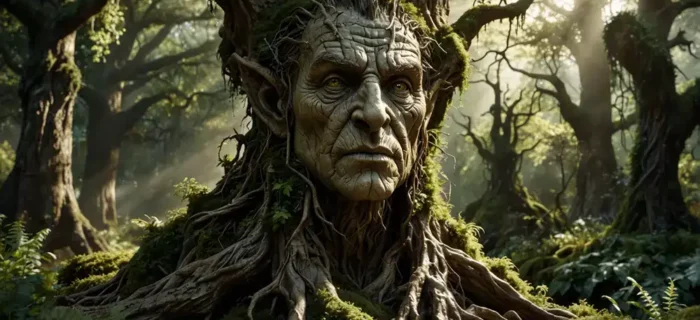
Here, Tolkien uses sensory descriptions – dim light, oppressive heat, and closeness to show how hostile the forest is. The environment itself appears to conspire against visitors, creating an almost claustrophobic sense of unease. The forest’s malevolence further highlights its history; it is said that the trees of the Old Forest remember the time when they were free to grow – they now resent the hobbits and other creatures for disturbing them.
Danger In The Forest
The Old Forest’s danger is not just physical it is also psychological. The hobbits are confused by the changing roads and the forest’s remarkable ability to obstruct their plans. The description of the forest roads, which appear to intentionally lead the intruders astray proves that the forest is alive and hostile. This disorientation highlights one of Tolkien’s persistent themes – losing control in the face of forces larger than oneself.
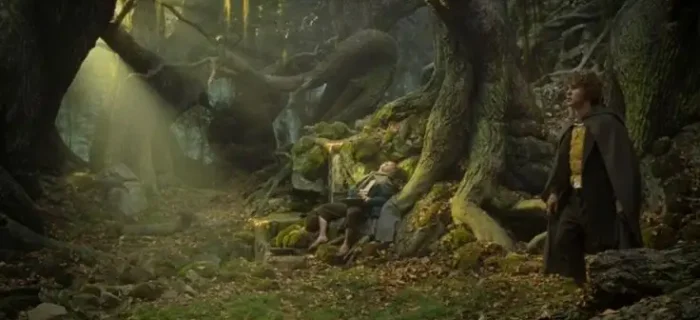
The Withywindle Valley, specifically Old Man Willow, is one of the most dangerous parts in the Old Forest. The ancient willow, which has an evil effect over the woodland directly endangers the lives of the hobbits. The ability of Old Man Willow to lull the hobbits into a slumber and then trap them in his branches is a reminder that nature can be harmful. The scene in which Pippin, Sam, and Frodo get trapped is very tense – their joint efforts were ineffective against the willow’s might; this highlights the concept that nature, while beautiful can also be unpredictable.
Beauty And Wonder In The Old Forest
The Old Forest is a magnificent place despite how dangerous it is. Tolkien’s descriptions of the woodland are vivid and evocative – he outlines the grandeur of the old trees and the allure of nature. Together, the way the light permeates through the shades, the sound of the wind rustling the leaves, and the profound sense of age give the forest an enticing beauty. Even though the hobbits were wary of their surroundings the size and complexity of the woodland captivated their imagination.
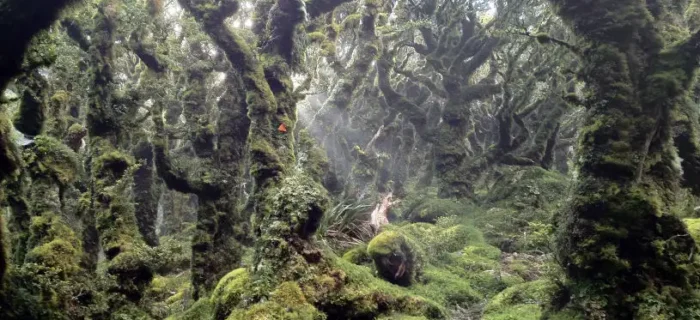
The splendor of the Old Forest serves two purposes in the story. It contrasts dramatically with its danger, resulting in an ambiguity important to Tolkien’s representation of nature. Nature is neither entirely good or bad; it exists as a force independent of human morality. This intricacy reflects the larger ideas of The Lord of the Rings, in which characters and settings frequently symbolize a mix of light and dark.
A Connection To The Past
The Old Forest is a link to Middle-earth’s deeper history. It is a living relic that is akin to the Ents of Fangorn and carries memories of ages long past. For example, the forest’s hostility towards Hobbits may stem from ancient wounds inflicted by the ancestors of the Shirefolk who cleared parts of the woods to settle.
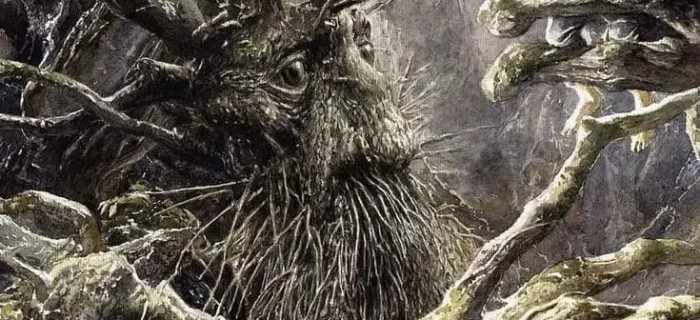
This historical continuity highlights one of Tolkien’s central themes – the interplay between change and permanence. While the world moves forward, echoes of the past persist, often influencing the present in profound ways. With its roots in the ancient world, the Old Forest serves as a distinct reminder of what has been lost and what remains.
Symbolism Of The Forest
The Old Forest is extremely ancient, predating even the Shire itself. Its age and the sensibility of its trees imply that it is a reservoir of memory, bearing witness to innumerable eras and changes brought about by time. The forest’s animosity against the hobbits, alluded at in Merry’s account of its past, demonstrates its long memory and reluctance to being forgotten or conquered. This historical weight connects to Tolkien’s larger subject of the inevitability of the past and its impact on the present.
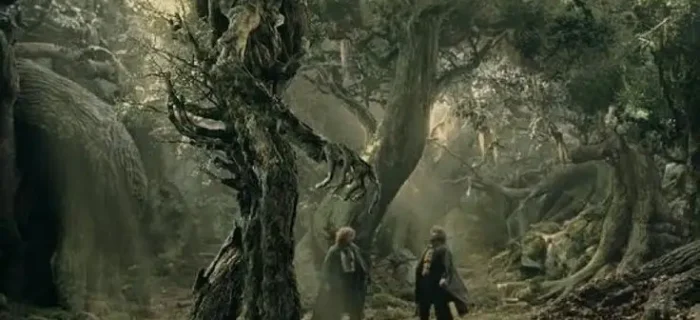
Within the forest stands a surprising counterpoint to its hostility: the home of Tom Bombadil, a figure with enigmatic power and harmony. Tom’s ability to traverse the forest unchallenged and his playful yet commanding relationship with its inhabitants represent a different approach to nature.
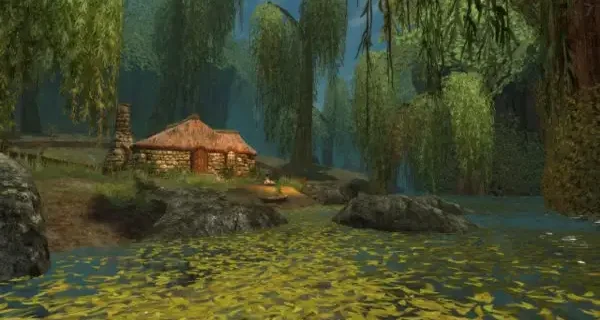
Unlike the hobbits, who are intruders, and unlike those who seek to dominate nature, Tom lives in harmony with the forest. He embodies balance – a key aspect of Tolkien’s philosophy; it shows that it is possible to coexist with nature as long as all is done out of respect and understanding.
The Lord of the Rings’ Old Forest is much more than just a setting – it is a potent representation of the tenacity of nature, the anarchy of the unknown, and the weight of the past. The woodland transforms the hobbits from wary tourists to seasoned explorers – they are brought face-to-face with a considerably complicated world whose ancientness they did not anticipate. Through his evocative portrayal, Tolkien asks readers and viewers to consider their own relationship with nature, the past, and the lines separating the known from the unknown. By accomplishing this, the Old Forest transforms into a miniature version of Middle-earth, a realm of wonder, danger, and profound significance.
What do you think? Leave a comment.








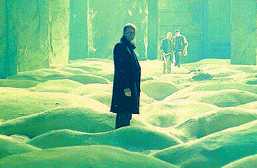


I like how the Old Forest is connected to Middleearth’s larger lore. It might have been part of a vast, ancient woodland like Fangorn makes its isolation even more poignant.
Something that’ll spoil any nature walk in NZ is coming across a pack of fools dressed in Middle Earth attire and have them in your view from then on… cute at first, but annoying soon after.
I was born and raised in Hobbiton (Matamata), and put simply, it is a fantastic place to be brought up. Beautiful and serene.
I came to NZ in 2002, initially on holiday with a rucksack and a box of records, but stayed on because opportunities came my way and I felt I’d regret it if I didn’t pursue them. Ten years on and (with my Kiwi better half) I own a tourism venture in Ohakune, which is in the shadow of Mt. Ruapehu. Tongariro National Park is a kilometer out of town and is just about as stunning a natural wilderness as you could imagine.
I’ve never been much of a fan of the LOTR/Hobbit productions – I just can’t be doing with the mawkish way they’re presented. But there’s no denying they’re epic works and it’s no surprise there are so many fans. We had the crew through Kune this time last year and now there are several new film locations locally which will be of interest to visitors. Good for local economies and a perfectly harmless enthusiasm that will no doubt wane long before Ruapehu and Ngauruhoe cease to spew andesitic debris into the atmosphere.
Culturally, there are certain aspects of NZ that are a challenge – several mentioned above. But there are aspects of Britain that used to drive me mad as well. Really, nowhere is going to be a cultural utopia. Isn’t it about making the best of what you’re presented with? Could have been born into a war/famine zone. As it is I have the choice of two great countries to call home.
Me too. Come and visit Hobbiton – and the rest of New Zealand – we will welcome you.
I am so damn proud to be a Kiwi – a small country, stunning natural beauty, kind folk – and the All Blacks!
In my experience, NZ was good, but if your from Europe and have any sense of culture and history you soon get a sense of how far from home you are. Ignorant racists are rife outside the cities too, particularly in the south. I met a lot of nice people though and was treated really well for being Scottish by ex-pats and their descendants. Coromandel, Wellington, Nelson and the southern wilderness are all ace.
Hmmm the Hobbit is a dreadful book, but NZ is a cracking place to visit!
I moved to NZ 8 years ago after living in London for 20 years and have not regretted it at all. Sure, there are social issues but nothing like the social and cultural wasteland that is now most of England, seemingly.
NZ is indeed beautiful, but that beauty’s often inaccessible. There are few public footpaths, and farmers make every effort to keep walkers off, even from rough grazing. You can’t, unlike most parts of Britain and Europe, say, “that’s a pretty hill – I’ll think i’ll take a stroll up it.” cos you can’t. When I queried the absence of walking country around Dunedin, the guy in the tourist office gave me a map of a fenced and paved path that you’d have to drive a few miles out of town to reach. Even the city of Auckland is markedly pedestrian-unfriendly.
It’s like a relic of a forgotten world, much like the Ents themselves.
Bombadil’s harmony with the woodland feels like a metaphor for coexistence, an idea that resonates today.
I found the discussion of the forest roads good. They seem to act with intent, almost like the One Ring, drawing the hobbits deeper into peril. Could this be Tolkien subtly linking all “wills” in Middle-earth, showing that everything – even landscapes – has agency and purpose?
Made me think of Mirkwood in The Hobbit. Both forests feel alive and foreboding, but the old forest seems more personal, almost holding grudges.
It’s about time to rewatch LOTR!
Annual tradition!
For me, it’s the main christmas trilogy!
I’m already ahead of you.
So… if you had to choose, would you sooner try to make your way through Mirkwood (Hobbit era), the Old Forest or Fangorn?
Fangorn. Nothing happens to the hobbits there
They are all messed up. Spin the wheel and take your pick.
Are the trees in the Old Forest related to the Ents and Huorns of Fangorn?
New Zealand is more magical than Middle Earth.
The Forest serves as a warning against judging nature superficially.
To me, the Old Forest feels like a final echo of the whimsical, fairy-tale tone that Tolkien mastered in The Hobbit.
magical forest
The slow-paced nature of the Old Forest section might feel out of place to some, but for me, it mirrors the hobbits’ gradual realization that the world is bigger and stranger than they imagined. It’s not just about action, it’s about setting a mood. The Old Forest, with its sentience and hostility, feels like an introduction to the profound, almost spiritual dangers they’ll face later.
It’s fascinating how this particular chapter in the book bridges lighter storytelling with the darker, more serious tone of the rest of The Lord of the Rings. For the hobbits, it’s a jarring step from the comfort of the Shire to the perils of the wider world—a perfect metaphor for their journey.
The Old Forest, with its sentience and hostility, feels like an introduction to the profound, almost spiritual dangers they’ll face later.
This reminds me of how Tolkien often portrays nature as both ally and adversary, like the Ents in Fangorn. The notion that the forest holds a “long memory” of past wounds connects beautifully to the broader themes of history and loss in The Lord of the Rings. Did Tolkien draw inspiration from real-world folklore about sentient forests?
Vivid reminder of how nature’s beauty can mask its dangers!
Love reading LOTR. Before, I always skimmed through The Old Forest because it felt a bit boring. But this time, I read it carefully for the first time and it was really good. It’s actually kind of scary, especially Old Man Willow. The way the tree is described is so clear, even for someone like me who can’t picture things in my mind. And the fact that the tree tries to drown Frodo? That’s pretty creepy.
Tom Bombadil’s role in the Old Forest gains so much more depth after reading The Silmarillion.
Yes. His cryptic references suddenly make sense, and his mastery over the forest adds layers to the themes of power and harmony.
Bombadil is such a unique character!
The dream sequences in Tom Bombadil’s house are some of my favorite moments in the story. They feel otherworldly and unsettling, almost like the forest itself has left a mark on the hobbits.
Frodo’s visionary dream and Merry’s nightmare of drowning hint at the psychological toll of their adventure.
The Old Forest passage often gets criticized as irrelevant to the plot.
It sets up themes of resistance against the unknown and the interplay of beauty and danger in nature. And it sets Tom Bombadil as a figure who exists beyond the rules of middle-earth, which is crucial to understanding the broader world Tolkien built.
Tolkien’s world-building often involves places that “remember,” giving middlearth its depth. I wonder how the forest compares to other sentient landscapes in literature.
Could the Old Forest symbolize the chaos of the natural world, which cannot be fully understood or controlled?
Nice point on the Forest being a link to Middle-earth’s deeper history. Tolkien often uses ancient places to anchor his world in a sense of time. The forest feels like an echo of Beleriand….. holding the scars of a world long gone.
Tolkien got me thinking differently about trees. I never really thought of forests as dangerous, either because we exploit them carelessly or because they’re just naturally menacing, like Old Man Willow. Why was that tree trying to swallow hobbits? It makes me wonder what else might’ve been rotting down there. Gross—like being squeezed and eaten by a giant snake.
It’s like your plane crashing in the Amazon. No mercy at all.
It’s beautiful to see modern world connect with ancient folklore and create a beautiful world of own
Your article nails it, congrats! Ineed, danger and beauty often go hand in hand, and that’s exactly what makes places like the Old Forest so mesmerizing. There’s something irresistible about the wild and untamed, like the forest itself is daring us to step closer.
Love how the forest’s hostility is tied to the hobbits’ ancestors clearing land.
The forest seems almost like an unaligned force, indifferent to human morality.
Humans are the unaligned ones, indifferent to nature.
The forest is a character shaped by the actions of others, much like Gollum or even the shards of Narsil.
Great article!
Truly beautiful
I feel nostalgic about this: The movie made my childhood. Reading this add more to the sense of the forest beyond the fantasy it offers for the delights of the audience. Thank you!
As a nature lover and a lover of culture and history, I like how you interpreted the significance of the forest in the movie – it’s really beautiful. Trees are life
It is interesting to note that nature, specifically the way it is represented in The Old Forest, transcends morality. Tolkien’s works are sometimes accused of black-and-white depictions of good and evil, and nature is generally “good”. However, it is also formidable, so subtleties like these really paint a more nuanced picture of Middle Earth.